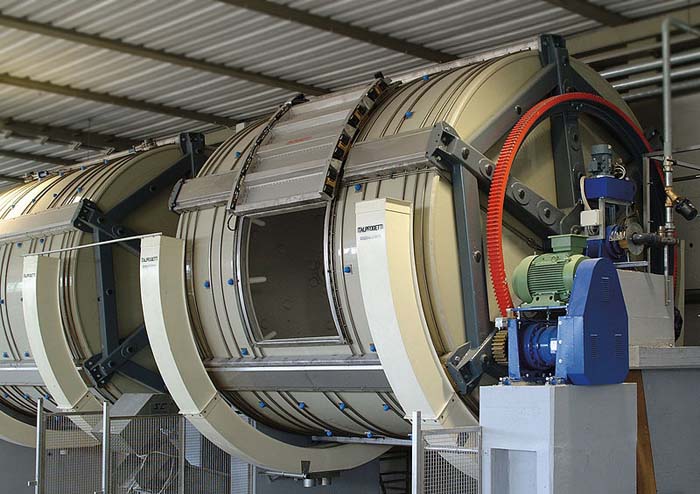
Accessories, clothing, shoes, and upholstery are just a few goods that rely on leather. The leather industry is a major player worldwide. However, it poses significant environmental challenges and uses a lot of water. Water and wastewater are abundant byproducts of the several processes involved in making leather, including soaking, curing, liming, tanning, dying, and finishing.
Key Pollutants in Leather Industry Wastewater
Wastewater from the leather industry is notoriously high in contaminants and produced in large volumes. Contaminants found in wastewater from the leather industry include:
Acids and Alkalis
- The wastewater becomes more acidic and alkaline due to using strong alkalis and acids in different phases of leather manufacturing.
Tannins
- There is a potential increase in the wastewater pollutant load due to using synthetic and vegetable tannins.
Organic Matter
- Carbohydrates, fats, and proteins are common organic contaminants produced by animal skins and hides processing.
Fat Liquoring Agents
- They help to make the leather softer. However, they are hazardous to fish and other aquatic creatures.
Sulfides
- While dehairing, sulfurides are released into the air. Hydrogen sulfide gas, which they can produce, is hazardous and smells terrible.
Suspended Solids and Solids
- A great deal of suspended solids, such as hair, pieces of meat, and other particles, are produced during leather production.
Pigments and Dyes
- These chemicals are used for finishing and can harm the environment.
Solvents
- Finishing techniques often involve the use of organic solvents. These are known to be both environmentally hazardous and very volatile.
Chromium
- The tanning process makes chromium a major contaminant, especially in its hexavalent form. As a carcinogen, it is extremely harmful.
Nitrogen and Ammonia Compounds
- Deliming and the decomposition of organic nitrogenous substances in the hides cause these.
In the absence of adequate treatment, these contaminants pose serious threats to aquatic life, human health, and the environment as a whole. Implementing efficient wastewater treatment and management systems is the only way to minimize the severity of these effects.

Importance of Water Treatment in the Leather Industry
Water treatment plays a key role in the leather industry, ensuring operational effectiveness, regulatory compliance, ecological protection, and resource conservation.
- Conservation of resources
- Chemical Recovery
Modern water treatment systems may extract useful chemicals from wastewater and reuse them in tanning to cut down on chemical use and costs.
- Reusing Water
One way to minimize the strain on freshwater supplies is to treat wastewater so it can be reused in manufacturing. In areas where water is scarce, this is of paramount importance.
- Public Safety and Health
- Worker Safety
Leather manufacturing plants can provide a safer working environment for their personnel by properly treating the water to decrease exposure to dangerous chemicals.
- Community Healt:
The leather industry treats wastewater before discharge to ensure safe potable water is available and protect community health. This prevents dangerous chemicals from entering local water supplies.
- Corporate Image and Responsibility
- Social Responsibilit:
Leather producers may strengthen their relationships with stakeholders and positively influence their communities by lowering the ecological impact of their operations.
- Sustainable Practices
Water treatment is an investment in long-term sustainability and ecological responsibility for the leather industry. This can boost the company’s image and win over eco-conscious customers.
- Ecological Protection
- Conservation of Biodiversity
If wastewater is not treated, animals and plants in the area can suffer greatly. Proper treatment ensures the maintenance of ecological balance, preservation of biodiversity, and removal of hazardous substances.
- Decrease in Pollutio
Sulfides, chromium, and other organic contaminants are some of the hazardous chemicals found in the leather industry’s wastewater. Effective water treatment helps minimize the release of harmful contaminants into natural bodies of water to prevent soil pollution and conserve aquatic ecosystems.
- Operational Effectiveness
- Cost Savings
Good water treatment can save money by reducing water use, raw water intake, and waste disposal expenses.
- Process Optimization
The effectiveness and quality of leather processing processes depend on using clean water. The tanning and dying procedures are susceptible to water impurities. This can result in lower product quality and defects.
- Regulatory Compliance
- International Standards
Meeting international environmental standards is of the utmost importance for leather products intended for export. Proper water treatment is necessary to comply with such criteria and facilitate international trade.
- Standard Adherence
In many nations, industrial wastewater regulations are quite strict. To stay out of legal trouble and prevent closures, leather producers must use efficient water treatment methods that comply with these regulations.
Effects of not treating Wastewater in the Leather Industry
The leather industry requires a lot of water and chemicals. This makes it one of the most polluting industries. Serious socio-economic, health, and ecological problems can arise from failing to handle wastewater from the leather industry. Among the most significant outcomes are these:
Ecological Effects
- Air Pollution
Hydrogen sulfide and ammonia are two of the chemicals used to treat leather. They have the potential to volatilize into the air, where they can cause nasty smells and pollution.
- Soil Contamination
When wastewater seeps into the ground, heavy metals and other contaminants can contaminate the soil. This decreases soil fertility, which in turn impacts local flora and agriculture.
- Water Contamination:
Toxic chemicals found in raw wastewater from leather tanneries have toxic substances; this includes organic contaminants, sulfides, and heavy metals like chromium. Local water bodies can be contaminated by these, which can cause:
- Eutrophication
Algae blooms are caused by excess nutrients (such as phosphorous and nitrogen), which reduce oxygen levels and harm aquatic life.
- Toxicity to Aquatic Life
Toxic chemicals and heavy metals kill fish and other aquatic life, destroying ecosystems and reducing biodiversity.
- Dangers to Human Health
Communities in close proximity to untreated wastewater discharge facilities face the danger of exposure to toxic substances. These can cause a range of health problems, including:
- Chronic Health Disorders:
Liver issues, kidney damage, and cancer are among the severe health issues that heavy metals like chromium can induce with prolonged exposure.
- Skin Conditions
Infections and skin disorders can develop by directly touching polluted water.
- Difficulty Breathing
Airborne chemicals can cause respiratory illnesses.
Socio-Economic Effects
- Property Value Decline
Environmental contamination and degradation can impact community development and real estate markets, lowering properties’ aesthetic and economic worth.
- Increased Healthcare Costs
Polluted air and water have serious health consequences, including higher healthcare expenses for impacted populations. This can put an extra burden on households already struggling to make ends meet.
- Loss of Income
Many people rely on fishing and agriculture for a living, yet both industries are vulnerable to soil and water contamination. Poverty and economic instability are possible outcomes.
- Work-related Risks:
Failure to implement adequate wastewater treatment and safety protocols exposes workers in the leather industry to potentially harmful substances. Both short-term and long-term health issues may result from this.
Overall Impact
Socio-economic, public health and environmental stability are all jeopardized by the leather industry’s untreated wastewater outflow. Sustainable practices, strict wastewater treatment techniques, and adherence to environmental standards are necessary to resolve these difficulties and foster a more environmentally responsible leather industry.
Conclusion
The leather industry must implement efficient wastewater treatment systems to reduce its negative environmental effects. By implementing sustainable practices and cutting-edge treatment technology, the industry can minimize its impact on the environment, save water, and comply with environmental regulations. This will improve the industry’s sustainability and corporate social responsibility and be good for the environment.
